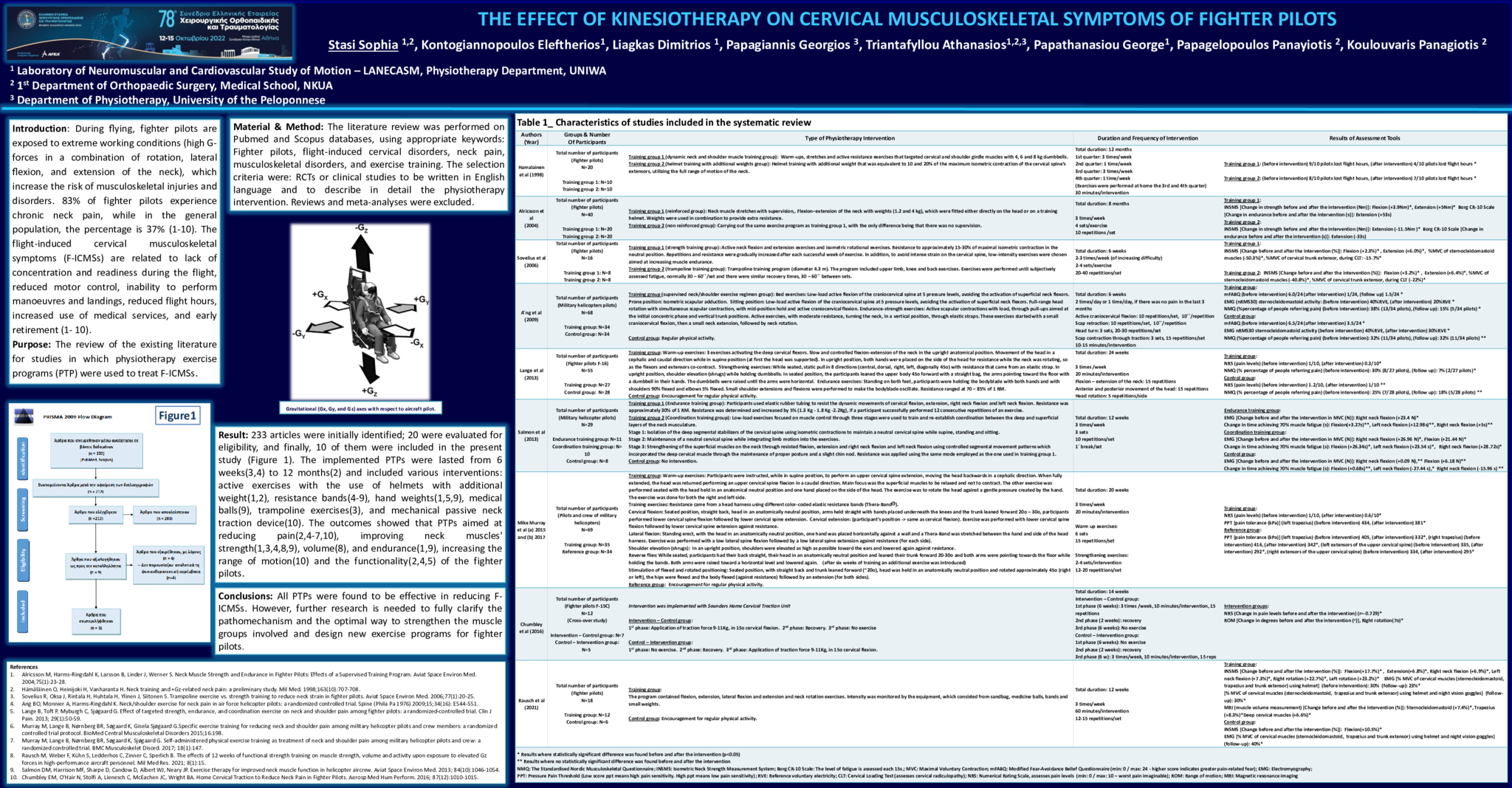ABSTRACT
Introduction: During flying, fighter pilots are exposed to extreme working conditions (high G-forces in a combination of rotation, lateral flexion, and extension of the neck), which increase the risk of musculoskeletal injuries and disorders. 83% of fighter pilots experience chronic neck pain, while in the general population; the percentage is 37% (1-10). The flight-induced cervical musculoskeletal symptoms (F-ICMSs) are related to lack of concentration and readiness during the flight, reduced motor control, inability to perform manoeuvres and landings, reduced flight hours, increased use of medical services, and early retirement (1- 10).
Purpose: The review of the existing literature for studies in which physiotherapy exercise programs (PTP) were used to treat F-ICMSs.
Material & Method: The literature review was performed on Pubmed and Scopus databases, using appropriate keywords: Fighter pilots, flight-induced cervical disorders, neck pain, musculoskeletal disorders, and exercise training. The selection criteria were: RCTs or clinical studies to be written in English language and to describe in detail the physiotherapy intervention. Reviews and meta-analyses were excluded.
Result: 233 articles were initially identified; 20 were evaluated for eligibility, and finally, 10 of them were included in the present study. The implemented PTPs were lasted from 6 weeks(3,4) to 12 months(2) and included various interventions: active exercises with the use of helmets with additional weight(1,2), resistance bands(4-9), hand weights(1,5,9), medical balls(9), trampoline exercises(3), and mechanical passive neck traction device(10). The outcomes showed that PTPs aimed at reducing pain(2,4-7,10), improving neck muscles' strength(1,3,4,8,9), volume(8), and endurance(1,9), increasing the range of motion(10) and the functionality(2,4,5) of the fighter pilots.
Conclusions: All PTPs were found to be effective in reducing F-ICMSs. However, further research is needed to fully clarify the pathomechanism and the optimal way to strengthen the muscle groups involved and design new exercise programs for fighter pilots.
References
1. Alricsson M, Harms-Ringdahl K, Larsson B, Linder J, Werner S. Neck Muscle Strength and Endurance in Fighter Pilots: Effects of a Supervised Training Program. Aviat Space Environ Med. 2004;75(1):23-28.
2. Hämäläinen O, Heinijoki H, Vanharanta H. Neck training and +Gz-related neck pain: a preliminary study. Mil Med. 1998;163(10):707-708.
3. Sovelius R, Oksa J, Rintala H, Huhtala H, Ylinen J, Siitonen S. Trampoline exercise vs. strength training to reduce neck strain in fighter pilots. Aviat Space Environ Med. 2006;77(1):20-25.
4. Ang BO, Monnier A, Harms-Ringdahl K. Neck/shoulder exercise for neck pain in air force helicopter pilots: a randomized controlled trial. Spine (Phila Pa 1976) 2009;15;34(16): E544-551.
5. Lange B, Toft P, Myburgh C, Sjøgaard G. Effect of targeted strength, endurance, and coordination exercise on neck and shoulder pain among fighter pilots: a randomized-controlled trial. Clin J Pain. 2013; 29(1):50-59.
6. Murray M, Lange B, Nørnberg BR, Søgaard K, Gisela Sjøgaard G.Specific exercise training for reducing neck and shoulder pain among military helicopter pilots and crew members: a randomized controlled trial protocol. BioMed Central Musculoskeletal Disorders 2015;16:198.
7. Murray M, Lange B, Nørnberg BR, Søgaard K, Sjøgaard G. Self-administered physical exercise training as treatment of neck and shoulder pain among military helicopter pilots and crew: a randomized controlled trial. BMC Musculoskelet Disord. 2017; 18(1):147.
8. Rausch M, Weber F, Kühn S, Ledderhos C, Zinner C, Sperlich B. The effects of 12 weeks of functional strength training on muscle strength, volume and activity upon exposure to elevated Gz forces in high-performance aircraft personnel. Mil Med Res. 2021; 8(1):15.
9. Salmon DM, Harrison MF, Sharpe D, Candow D, Albert WJ, Neary JP. Exercise therapy for improved neck muscle function in helicopter aircrew. Aviat Space Environ Med. 2013; 84(10):1046-1054.
10. Chumbley EM, O'Hair N, Stolfi A, Lienesch C, McEachen JC, Wright BA. Home Cervical Traction to Reduce Neck Pain in Fighter Pilots. Aerosp Med Hum Perform. 2016; 87(12):1010-1015.
- 7 προβολές






